Perspectives for the 22nd Century
by Jean-Jacques Birgé
File prepared by Jean-Jacques Birgé and Madeleine Leclair
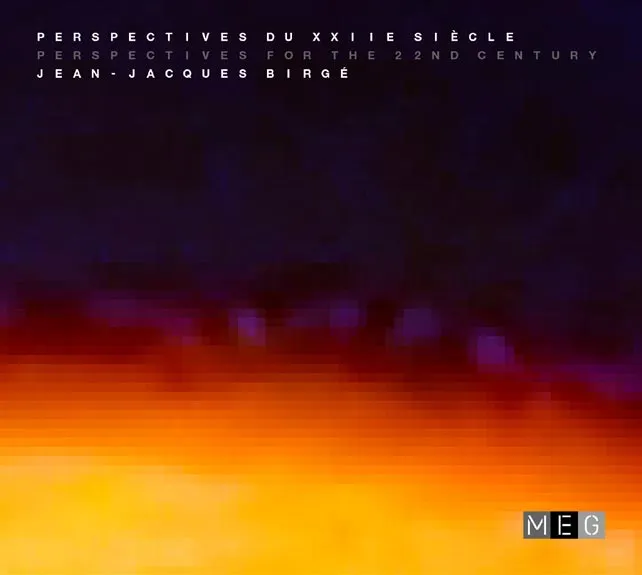
Commissioned by the Museum of Ethnography in Geneva (MEG), Jean-Jacques Birgé composed a work that includes 31 pieces from the World Collection of Recorded Folk Music, the famous anthology released for the first time by Constantin Brăiloiu between 1951 and 1958, then republished in 1984 and in 2009 by Laurent Aubert.
The 16 pieces of the CD are constructed from numerous-sound materials : environmental sounds, early sound archives and instrumental sequences that surround the voice, the guiding thread of the work and the reminder of our humanity.
A disturbing echo of current events, Perspectives for the 22nd Century is a sound fiction following the journey of humans who must reinvent themselves.
This CD is the 5th title to appear in the series of recordings published by the MEG and devoted to contemporary creations composed on the basis of its sound archives.
Listening on SoundCloud
From dystopia to utopia
“The idea was to compose a work based on the International Archives of Folk Music (IAFM), and more precisely the collection of recordings gathered by Constantin Brăiloiu, the first anthological reference of traditional music.
I wrote a little scenario of anticipation where the survivors of the disaster, in 2152, live on the ruins of the Museum of Ethnography in Geneva! They decide to reconstruct themselves from the archives discovered on site. Dystopia becomes utopia.
So I spent my time attempting to ‘muddy the waters’ adding my sounds (music and phonography) to the archives of the 1930s-1950s, mixing acoustic instruments (mine and those of my guests) with virtual ones, preserving the integrity of the archives as much as possible, while inventing a ‘modern’ vision. If the ensemble is fundamentally musical, it obeys a logic of radio evocation, a kind of Hörspiel, while being inspired by the tradition of symphonic poems.
Like Brăiloiu, I considered music in its functionality before its geography.
If each piece obviously obeys a different logic, I have favoured unity, thanks to fiction and mixing, in the midst of this variety that makes up the world. In these times of questioning about the future of the planet and humanity, the dedication to C.F. Ramuz and Vercors seemed obvious to me.’’
Jean-Jacques Birgé

«Ciel !» (photo J.-J. Birgé)
Interview with Jean-Jacques Birgé
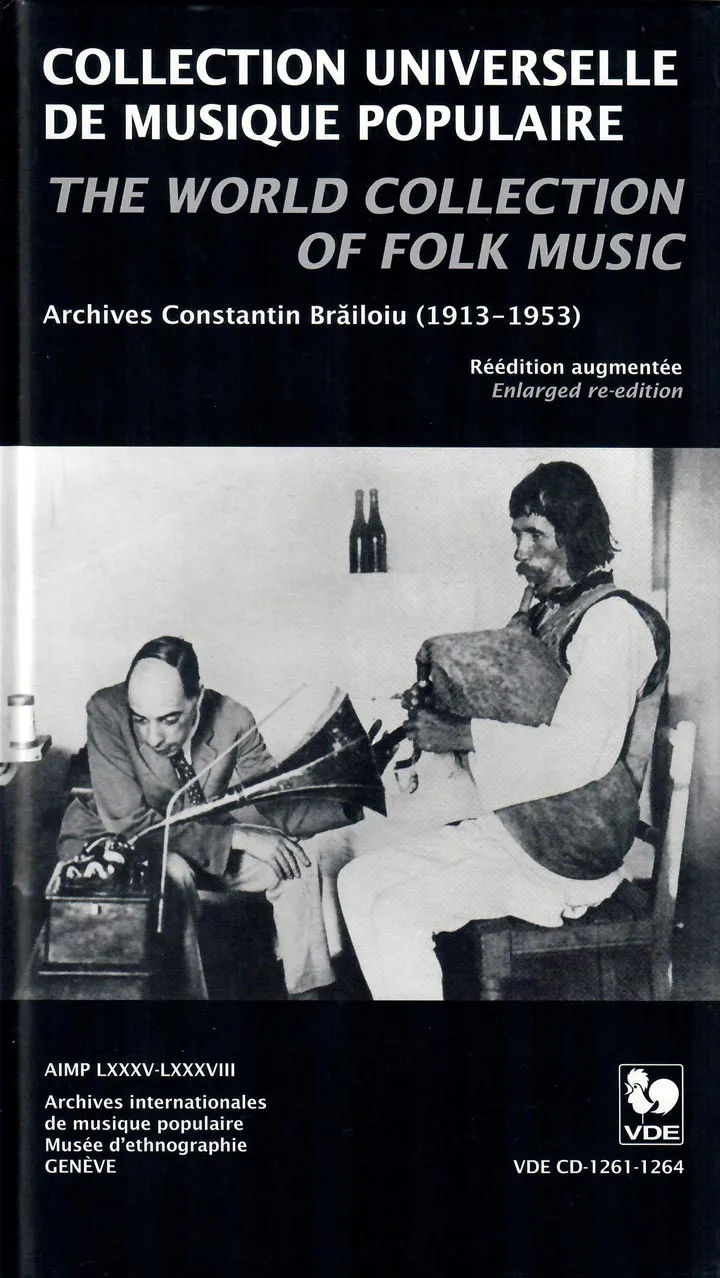
ⓟ 2009 VDE-Gallo.
The World Collection of Folk Music. Archives Constantin Brăiloiu (1913-1953). Second enlarged re-edition directed by Laurent Aubert. 4 audio CDs. International Archives of Folk Music, Musée d’ethnographie de Genève, AIMP LXXXV-LXXXVIII / VDE-GALLO CD-1261-1264. © 1984/2009 MEG-AIMP & VDE-Gallo Ⓟ 2009 VDE-Gallo.
Musical instruments and instrumentalists
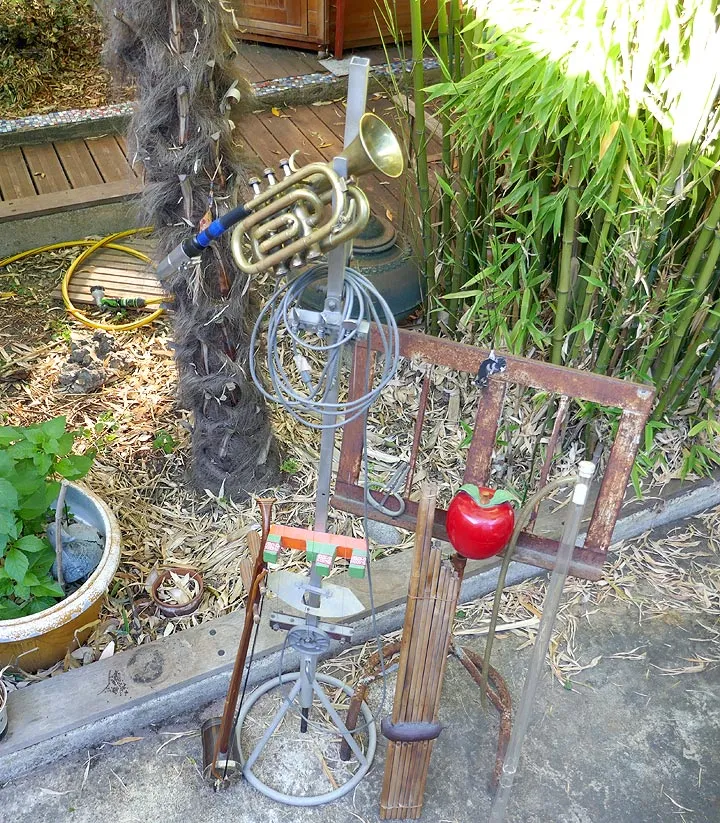
Photo : J.-J. Birgé
Instruments collection of Jean-Jacques Birgé
Jean-Jacques Birgé is a multi-instrumentalist. For 50 years, he has been collecting musical instruments, toys and other sound objects, which he keeps preciously in his studio and takes care to keep in playable condition. His collection includes more than 200 pieces that he acquired during his travels or that were given to him by the many musicians he worked with.
In Perspectives for the 22nd Century one can hear the various instruments and sound toys from the collection of Jean-Jacques Birgé, which he himself plays:
From top to bottom and from left to right: reed trumpet*, brake (electro-acoustic bass with variable tension)*, Jew’s harps, Happy apple sound toy, erhu fiddle, khen mouth organ, plexiglas flute* (*= built by Bernard Vitet).
Idiophones from the MEG collections
The scenario of Perspectives for the 22nd Century goes that among the early recordings gathered by Constantin Brăiloiu, the survivors of the disaster of 2152 also found in the ruins of the MEG a few small musical instruments that were once kept in the storage rooms of the museum. These are small cymbals from Thailand and bowl-bells from Japan and China. In order to integrate them into its composition, Jean-Jacques Birgé himself played them during a recording session which took place on January 24th 2020 in the MEG restoration workshop.
One can hear these instruments in the pieces «Éternelle» and «Gwerz de l’âme juste».
Ching cymbals from Thailand (ETHMU 038641)
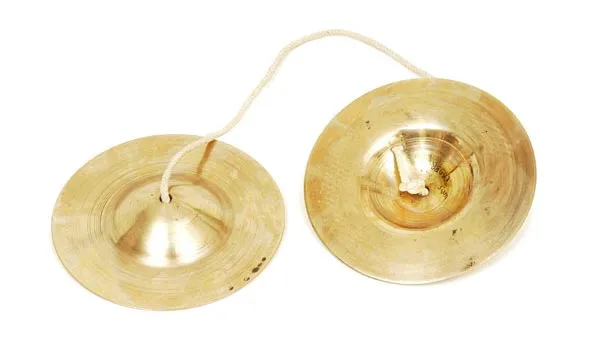
Châp lek cymbals from Thailand (ETHMU 038643)
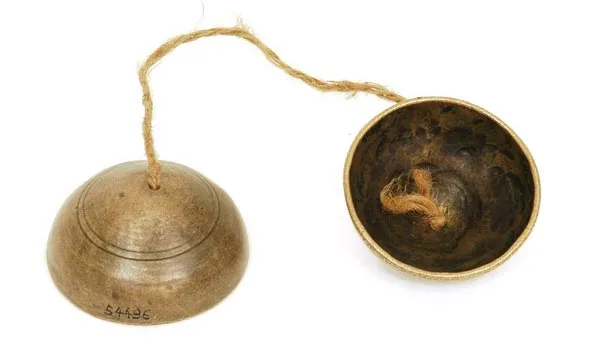
Jota cymbals from Assam, India (ETHMU 054496)
Châp yai cymbals from Thailand (ETHMU 038644)
Kin bowl-bell from Japan (ETHMU K001816) and bowl-bell from China (ETHMU K002347)
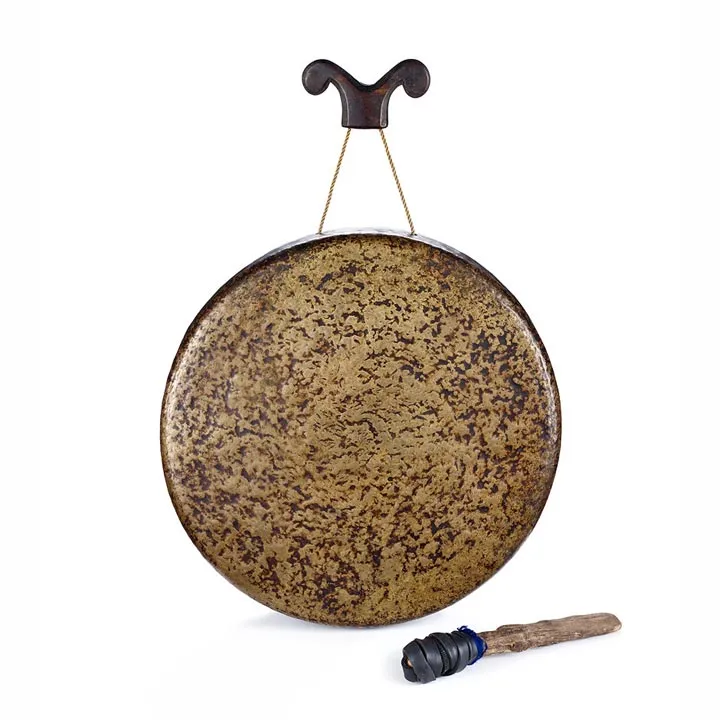
Gangha gong from Philippines (ETHMU 043175)
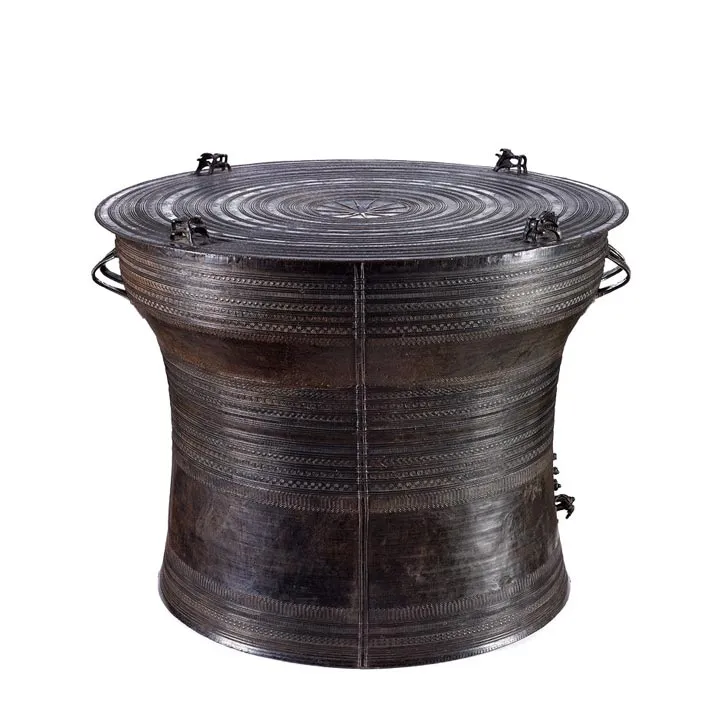
Bronze drum from Thailand(ETHMU 027887)
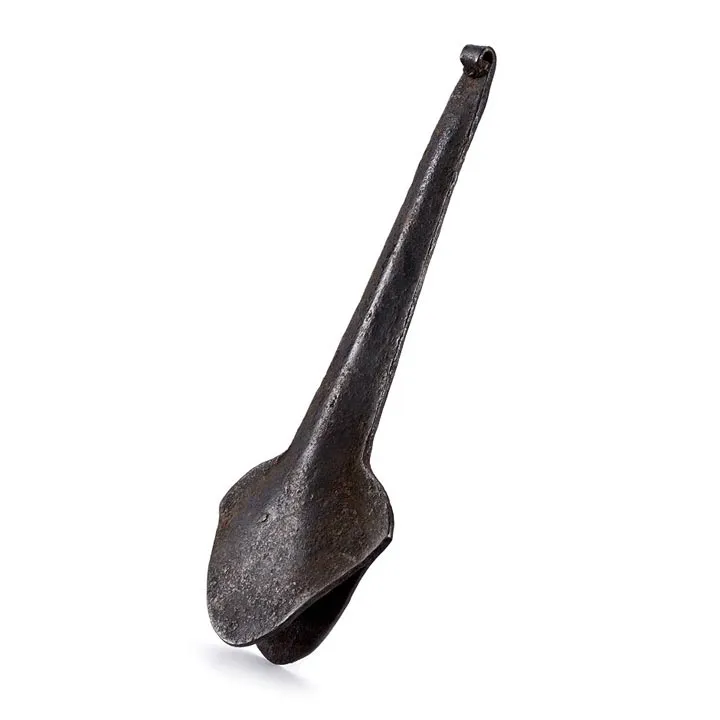
Bronze drum from Thailand(ETHMU 027887)
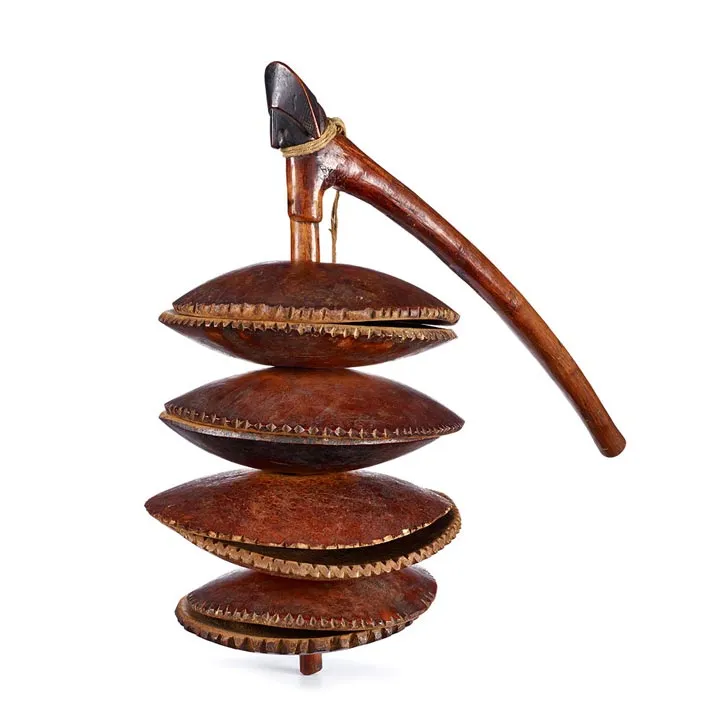
Sistrum from Mali (ETHMU 024561)
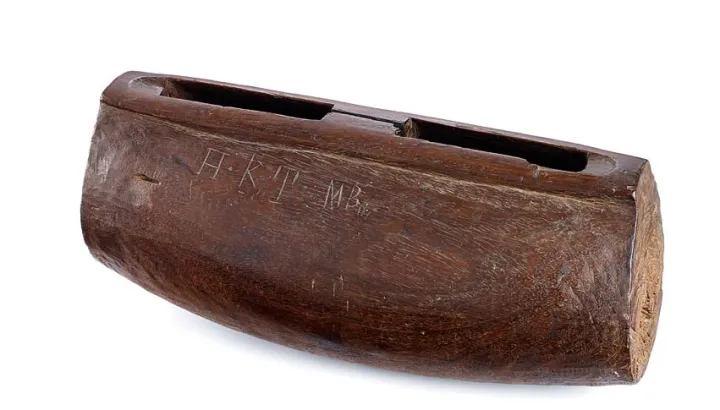
Wooden slit drum from Cameroon (ETHMU 042417)
The musicians who took part in the album
Jean-Jacques Birgé
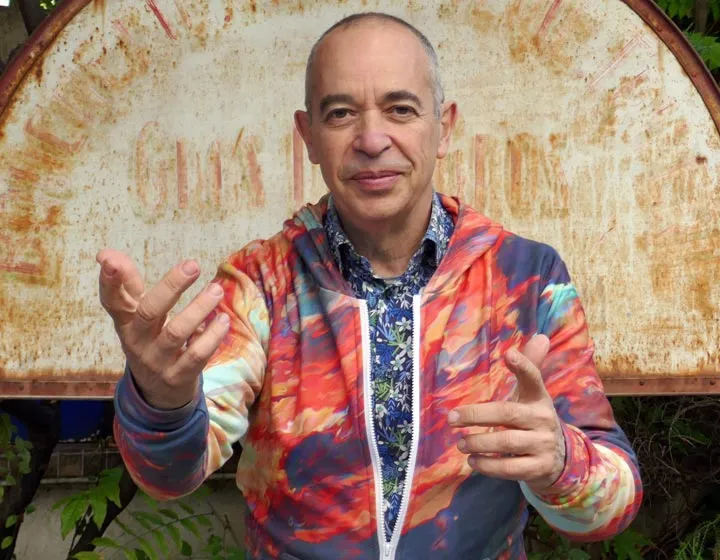
Self-portrait, 2018
Music composer, film director, multimedia author, sound designer, writer, Jean-Jacques Birgé considers music essentially in the audio-visual relationship, or at least in its confrontation with other forms of artistic expression.
Founder of GRRR Records, he was one of the first synthesizers in France as early as 1973, and with Un Drame Musical Instantané the precursor of the return to film-concert in 1976. If his first electronic work dates back to 1965, he composes as well for symphony orchestras as he freely improvises with musicians from the most diverse backgrounds. For his ‘radio’ creations and his multimedia shows, improvisation and preliminary writing merge, his own electroacoustic treatments are integrated with traditional instruments to create evocative musical fictions which he calls ‘music apropos’.
From 1995, he became one of the most well-known sound designers in multimedia and the specialist in interactive musical composition, seeking to deepen the effects of meaning and to develop an ever wider range of emotions. As part of his work on major exhibitions, he recently worked at the Louvre Museum, the Cité des Sciences et de l'Industrie, the Grand Palais, the Pantheon, the Palais de Tokyo, the ZKM...
In addition to about forty LPs and CDs, his website drame.org offers 82 unreleaed albums (157 hours!) free to listen and download.
His best-known works are the LP Defense de by Birgé-Gorgé-Shiroc (Nurse With Wound List), the short film The sniper, the CD-Rom Alphabet (with M.Lefèvre and F.Durieu), the opera for 100 connected rabbits Nabaz'mob (with A.Schmitt), the CD The 100th Anniversary and his French daily blog that he has been keeping for 15 years now.
Jean-François Vrod, violon
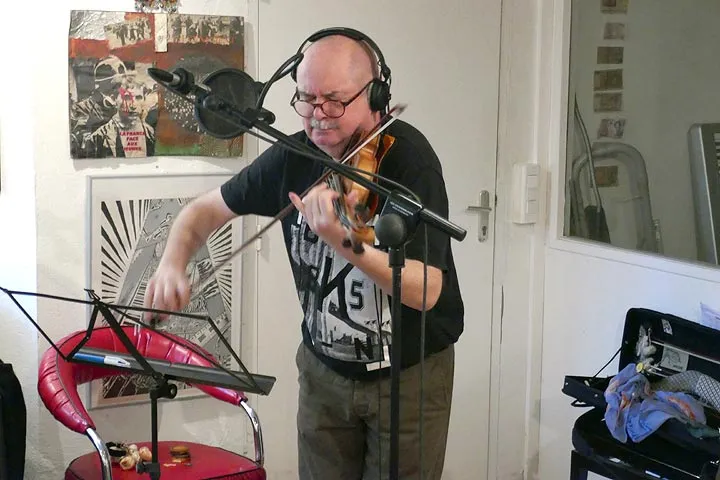
Photo : J.J. Birgé
Jean-François Vrod follows Brăiloiu on the track, accepting the heritage to invent the future...
Antonin-Tri Hoang, clarinette basse
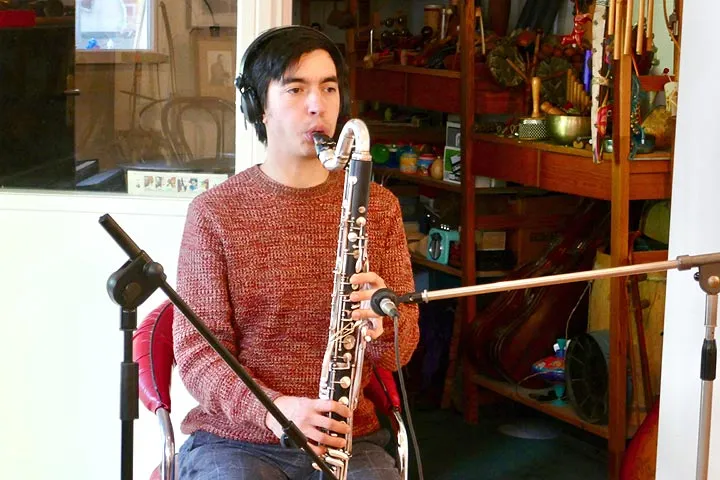
Photo : J.J. Birgé
It's all happening like a dream. Antonin-Tri Hoang mixes imagination and reserve. We have surprised ourselves by dancing...
Nicolas Chedmail, cuivres
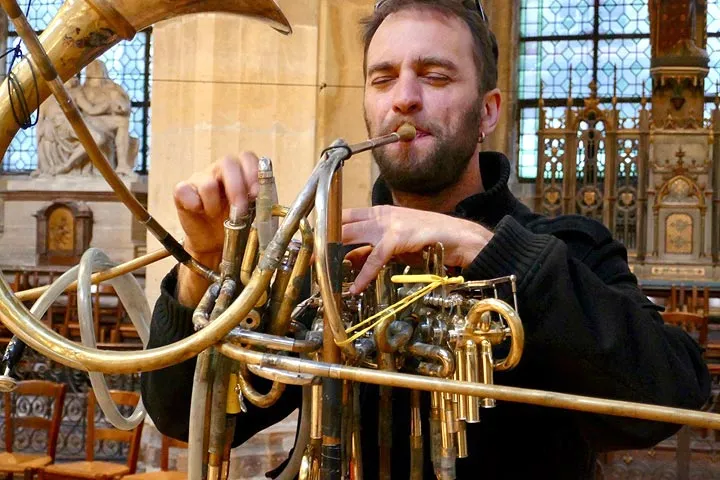
Photo : J.J. Birgé
Nicolas Chedmail without the Spat’sonore, but the horn emerges from harmony. Wanderer above the Sea of Fog…
Sylvain Lemêtre, percussions
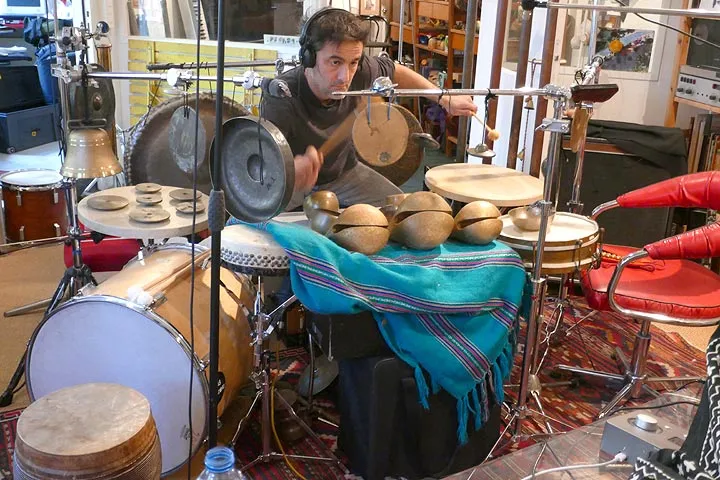
Photo : J.J. Birgé
Drums, cymbals and gongs that Sylvain Lemêtre hits, rubs or caresses, preserving the dramatic continuity...
The Clips
Jean-Jacques Birgé asked several film directors to create videos based on the pieces on the CD, inspired by the libretto of his hörspiel. They arranged their images as the composer had done with the sound archives. Sonia Cruchon, Eric Vernhes, Nicolas Clauss, John Sanborn, Valéry Faidherbe, Jean-Jacques Birgé himself have thus let their imagination question the passage from our past to the future, a great gap in an unstable balance between dystopia and utopia. In a second step, the videos will be gathered together to make a film telling the adventure of the survivors of 2152, in a new form that will follow its own logic.
Éternelle
Film produced by Nicolas Clauss
It has been found again. What? Eternity. It's the sea going into the sun.
De vallées en vallées
Film produced by Eric Vemhes
Paracelsus: "I bring you plague. I'm not afraid of anything. I've already got it." Running wild under the stars...
Berceuse ionique
Film produced by Sonia Cruchon
Birth and rebirth. The silhouettes of the past inhabit the colourful shadows...
Ensemble Ratatam
Film produced by John Sanborn
Time runs out and collapses, so the masks will not fall off, the hive will save us if we protect it and the bodies will draw hypnotic flowers, but if the doves are clear the questions remain unanswered...
MEG Sound Archive integrated to Perspectives for the 22nd Century
Lists of pieces from The World Collection of Folk Music that are included in the work and that can be listened to on the MEG website :
- Walloons (Belgium). Dance of the ‘Gilles de Binche’. Drums, bells, 1950 (CD4 :18)
- Haussas (Niger Territory). Drums accompanying a wrestling display in Tahoua, 1948 (CD1 : 2)
- Tuaregs (Tahoua region). Program music: attack of a herd. Reed flute, 1948 (CD1 : 5)
- Ethiopians (Kemant and Amharas). Amhara declamation of war theme. Man’s voice, 1950 (CD1 : 16)
- Basques (French Basque country). Sword dance. Flutes and drums, 1952 (CD3 : 24)
- German Swiss. Alpsegen (Alp blessing). Alp horn. Canton of Schwyz, 1942 (CD4 : 26)
- German Swiss. Alpenfahrt (Going up to the alp). Canton of Appenzell, Wasserauen, 1942 (CD4 : 27)
- Fulahs (Niger territory). Flutes duet played within a mortar, 1949 (CD1 : 11)
- Norwegians. Dance (halling). Jew’s harp. Setesdal, 1938 (CD4 : 46)
- Turks (Central Anatolia). Program Music : The story of the black ewe. Flute without mouthpiece (kaval), 1938 (CD1 : 29)
- Estonians. Dance. Jew’s harp, 1938-1939 (CD4 : 52)
- Basques (French Basque country). Mountain dweller cries. Women’s voices, 1952 (CD3 : 23)
- Gaels (Hebrides : Isle of Barra). Work song (tweed weaving) : "Di Sathuirne ghabhmi mulad" (Saturday I was sad). Women’s voices, 1938 (CD4 : 10)
- Georgians. Dance song. Men’s choir. Western Georgia (CD2 : 3)
- Macedonia Serbians (Skoplje region). Navvy song. Men’s choir and two flutes (supilki), 1951 (CD2 : 26)
- Georgians. Farm work song. Solo and men’s choir. Eastern Giorgia (CD2 : 2)
- Caribou Eskimos (Hudson Bay). Magic incantation for seal-hunt, 1938 (CD4 : 56)
- Africans. Republic of Congo, Ouesso region. Yeli, magical elephant hunting song. Women’s solo and choir. Babinga Bangombé Pygmies. Pygmy camp near Gandicolo village, 1946 (CD1 : 18)
- Basques (French Basque country). Scenes of improvisation contest. Men’s voice, 1952 (CD3 : 22)
- Bretons. Song : "Gwerz of the just soul". Man’s voice. Léon, 1952 (CD3 : 14)
- Romanians (Old Romania). Dance song (sirba). Woman’s voice, guitar, two violins, bass. Oltenia, Gorj region, 1939 (CD2 : 17)
- Takasago Formosans. Ritual song for millet-sowing: "Passipot-pot". Men’s choir. Bunun tribe, 1943 (CD1 : 39)
- Kabyles (At Yänni tribe, Djurdjura Kabylia). Dance tune (in summer after the harvest on the threshing grounds). Flute (ajuaq) and frame drum (abandir), 1952 (CD1 : 28)
- Japanese. Afternoon ritual song of rice-planting : "Tave-Uta". Men’s voice. Gumma district (CD1 : 35)
- Bulgarians (Sofia region). Program music: "The lost herd". Shepherd flageolet (CD2 : 22) ;
- Fulahs (Niger territory). Calls to the herd, 1948-1949 (CD1 : 9)
- Greek (Asia Minor). Lullaby. Woman’s voice. Ionia, 1930 (CD2 : 31)
- Africans (Ivory Coast). Song for entertainment. Men’s choir and dyulu forked harp, struck bottles, 1952 (CD1 : 20)
- French (Berry). Two Bourrées (hurdy-gurdy), 1948 (CD3 : 12 and 13)
- Germans. March. Flutes and drums. Swabia, 1930 (CD4 : 30)
- Asturians. Cowherd’s song : vaqueirada. Man’s voice, tambourine (pandeiro). Luarca region, 1952 (CD3 : 32)

Perspectives for the 22nd Century
Jean-Jacques Birgé (2020), based on the MEG sound archive.
Musicians : Jean-Jacques Birgé (keyboards, wind instruments, percussion, etc.), Jean-François Vrod (violon), Antonin-Tri Hoang (bass clarinet, alto sax), Nicolas Chedmail (French horn), Sylvain Lemêtre (percussion), Elsa Birgé (singing) and 18 people speaking in their mother tongue.
Recording and mixing by Jean-Jacques Birgé in 2020, in the Studio GRRR (Bagnolet, France)
Edition : Musée d’ethnographie de Genève
Editor : Madeleine Leclair
MEG-AIMP118
© ℗ 2020 MEG-AIMP
Listening on SoundCloud
Berceuse ionique (extrait plage 15)
Track list
| 01 | Éternelle |
| 02 | L’Indésir |
| 03 | MEG 2152 |
| 04 | Renaissance |
| 05 | Les Jambes |
| 06 | Hibakusha |
| 07 | Aksak tripalium |
| 08 | Tirage au sort |
| 09 | Larmes de crocodile |
| 10 | Variationstrieb |
| 11 | Gwerz de l’âme juste |
| 12 | Au loup |
| 13 | Les champs les plus beaux |
| 14 | De vallées en vallées |
| 15 | Berceuse ionique |
| 16 | Ensemble Ratatam |
Total duration : 58’25